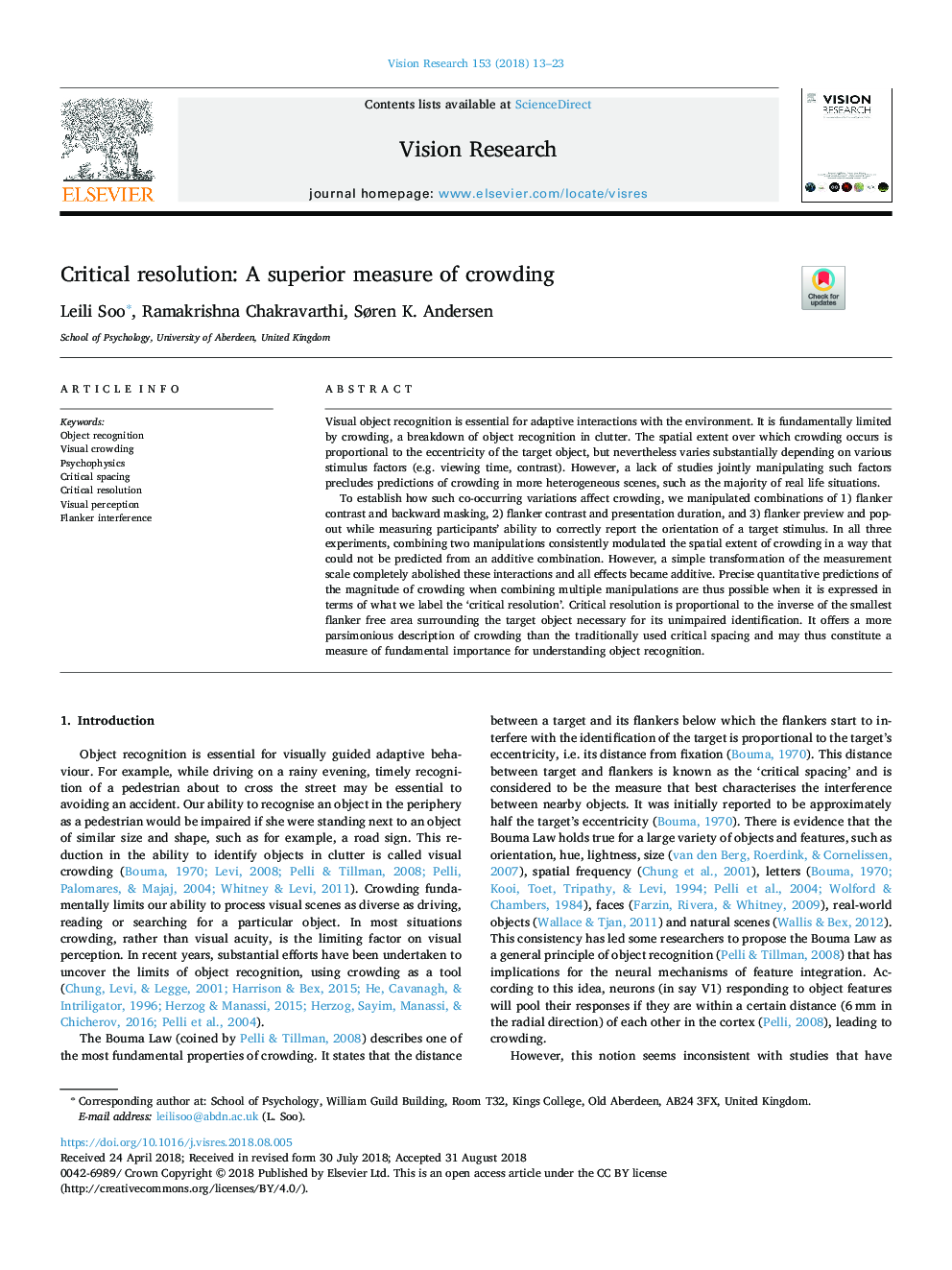| Article ID | Journal | Published Year | Pages | File Type |
|---|---|---|---|---|
| 11025390 | Vision Research | 2018 | 11 Pages |
Abstract
To establish how such co-occurring variations affect crowding, we manipulated combinations of 1) flanker contrast and backward masking, 2) flanker contrast and presentation duration, and 3) flanker preview and pop-out while measuring participants' ability to correctly report the orientation of a target stimulus. In all three experiments, combining two manipulations consistently modulated the spatial extent of crowding in a way that could not be predicted from an additive combination. However, a simple transformation of the measurement scale completely abolished these interactions and all effects became additive. Precise quantitative predictions of the magnitude of crowding when combining multiple manipulations are thus possible when it is expressed in terms of what we label the 'critical resolution'. Critical resolution is proportional to the inverse of the smallest flanker free area surrounding the target object necessary for its unimpaired identification. It offers a more parsimonious description of crowding than the traditionally used critical spacing and may thus constitute a measure of fundamental importance for understanding object recognition.
Related Topics
Life Sciences
Neuroscience
Sensory Systems
Authors
Leili Soo, Ramakrishna Chakravarthi, Søren K. Andersen,
